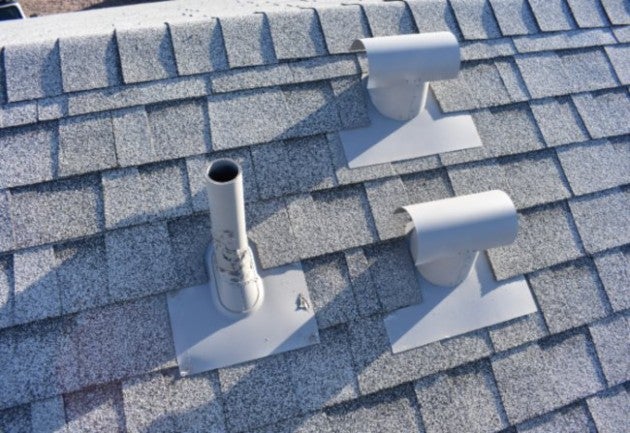What Is a Plumbing Vent and How Does It Work?
What is a Plumbing Vent, and How Does it Work?
When thinking about your home’s plumbing system, it’s easy to focus on pipes that deliver water or remove waste. However, there’s another important component that often gets overlooked: the plumbing vent. This essential part of your plumbing system helps keep your home safe from unpleasant odors and keeps water flowing smoothly through your pipes. In this article, we’ll explain what a plumbing vent is, how it works, and why it matters for your home.

What is a Plumbing Vent?
A plumbing vent, also known as a vent stack or air vent, is a pipe that extends from your plumbing system up through your roof. Its purpose is to regulate the air pressure within the plumbing pipes, allowing waste and water to flow freely out of your home. Without this vent, the water in your drains would move sluggishly, and you might encounter problems like clogged drains or overflowing toilets.
This vent also prevents dangerous sewer gases from entering your home by directing them safely outside when it’s working properly. It’s a simple yet essential part of keeping your plumbing system functioning smoothly.
The Vent Pipe’s First Benefit – Maintaining Air Pressure
The primary function of a plumbing vent pipe is to maintain proper air pressure within your plumbing system. Each time water moves through the pipes, whether from flushing the toilet, washing dishes, or running the shower, air is needed to balance the pressure. Without the vent, negative pressure could develop, causing water to be siphoned out of traps, leading to foul smells in your home. A properly functioning vent ensures air flows into the system to replace this pressure, preventing blockages and maintaining smooth drainage.
Common Types of Plumbing Vents
There are several types of plumbing vents, each suited for different needs within a plumbing system:
- Main Vent Stack – The main vent runs vertically through your home, connecting directly to your roof.
- Branch Vents – Horizontal pipes that connect to the main vent stack to help maintain proper airflow.
- Auxiliary Vent – This vent serves as a backup for branch vents, providing additional airflow as the main system needs it.
- Air Admittance Valve (AAV) – This is a one-way mechanical vent that allows air into the drain system but prevents sewer gases from escaping into your home. AAVs are often used in remodels, where adding a traditional vent might be challenging.
Why is a Plumbing Vent Necessary?
A plumbing vent serves several important functions. Without it, your home’s drainage system would struggle to remove wastewater efficiently, potentially leading to problems like slow drainage, foul odors, or even pipe damage due to the build-up of pressure. In addition, the vent prevents harmful sewer gases from seeping back into your living space, protecting your health and comfort.
The vent also reduces the risk of clogged toilets and slow drains by balancing the air pressure in the pipes If you’re experiencing frequent clogs or a blocked toilet, there could be a problem with your plumbing vent.
Potential Vent Pipe Problems
As a part of your home’s plumbing system, vents can develop issues over time. Here are some common problems:
- Clogs – Vents can become blocked by debris such as leaves, bird nests, or even snow. A blocked vent prevents air from flowing freely, which can result in slow drainage or a vacuum effect in your plumbing.
- Cracks or Leaks – Damage to the vent pipe can lead to water or sewer gas leaks. This can be caused by weather, animals, or simply age-related wear and tear.
- Improper Installation – If a vent is not installed correctly, it won’t be able to perform its job, leading to air pressure imbalances and drainage issues.
What Are The Common Issues with Plumbing Vents and Pipes?
Problems with plumbing vents are often the culprit behind recurring clogs, slow drains, and toilets that frequently back up. For example, if your toilet seems to overflow more often than it should, it could be a sign that the plumbing vent is blocked, preventing proper air circulation. Slow drainage in sinks and bathtubs might also be caused by a venting issue rather than a simple clog.
If you’re experiencing these issues, it’s important to contact a professional plumber who can inspect your vent and resolve any problems before they escalate into expensive repairs.
Who to Call for Assistance
At Kevin Ginnings Plumbing Services, Inc. we pride ourselves on our expertise and commitment to customer satisfaction. With years of experience serving South Kansas City, we understand the ins and outs of plumbing systems and can tackle even the most challenging vent-related issues. Whether you need toilet repair, vent inspection, or a solution to a blocked toilet, we’re here to help.
Our team uses the latest tools and techniques to diagnose and fix plumbing vent problems quickly and efficiently, restoring your home’s plumbing to peak performance. We believe in clear communication, quality workmanship, and providing peace of mind to our customers. When you choose us, you’re partnering with professionals who care about your home as much as you do.
For more information about our company and plumbing services, visit our website or contact us to schedule an appointment. We look forward to serving you!
